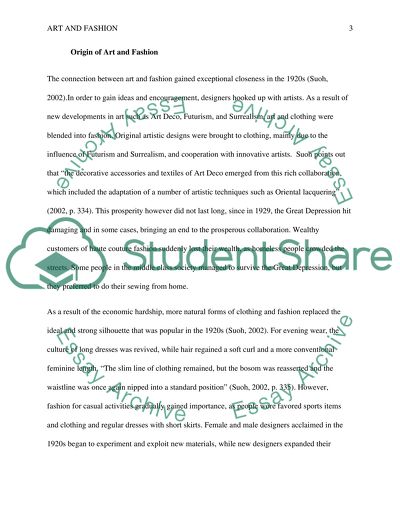Cite this document
(“Fashion and Art Essay Example | Topics and Well Written Essays - 2250 words”, n.d.)
Retrieved from https://studentshare.org/visual-arts-film-studies/1472506-fashion-and-art
Retrieved from https://studentshare.org/visual-arts-film-studies/1472506-fashion-and-art
(Fashion and Art Essay Example | Topics and Well Written Essays - 2250 Words)
https://studentshare.org/visual-arts-film-studies/1472506-fashion-and-art.
https://studentshare.org/visual-arts-film-studies/1472506-fashion-and-art.
“Fashion and Art Essay Example | Topics and Well Written Essays - 2250 Words”, n.d. https://studentshare.org/visual-arts-film-studies/1472506-fashion-and-art.


